Bharat Mata or Mother India, is a personification of a woman as country of India. Many times Bharat Mata is depicted as an Indian Goddess, most likely Goddess Durga holding the national flag and clad in white or orange saree. Bharat Mata came into being and symbolized the freedom struggle during the late 19th century. It has been debated that this image of Bharat Mata is biased towards Hinduism and doesn’t suffice to the multi-religious and multicultural population of India. Let us take a look at three different depictions of Bharat Mata by M. F. Hussain, D. Bannerjee and Abanindranath Tagore.
M F Husain
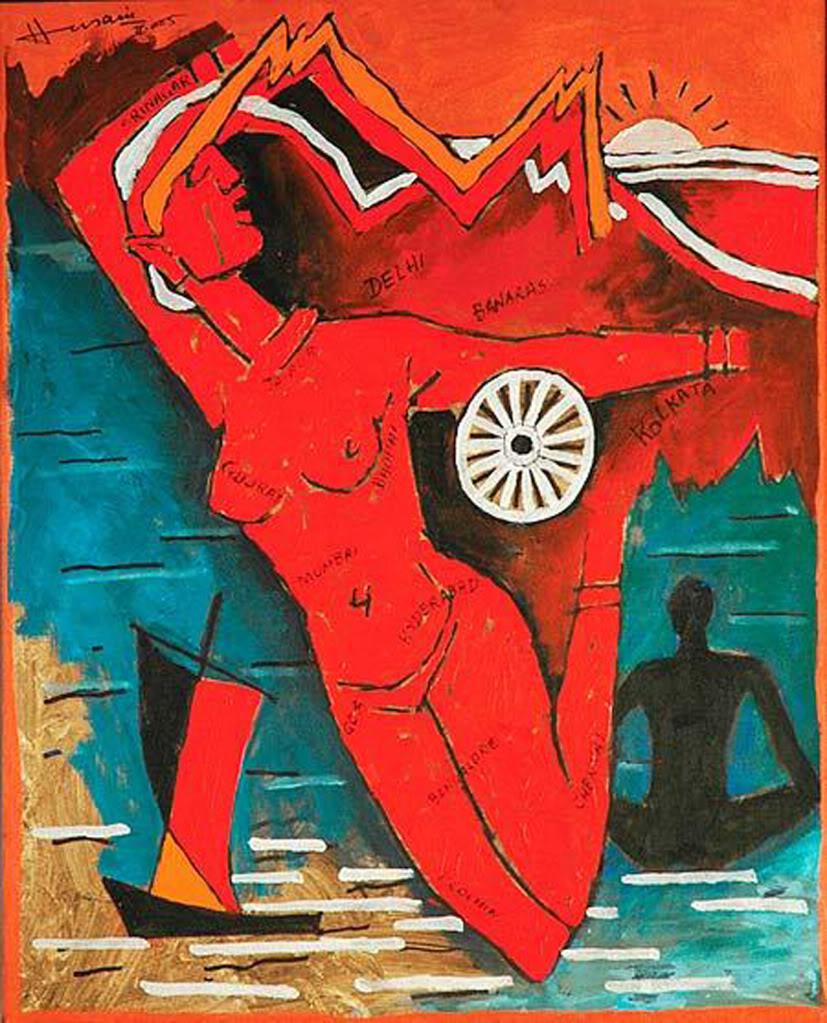
Bharat Mata by M. F. Hussain
Controversial about its title and depiction of Bharat Mata, she is shown nude and coloured in a hue of matte red. The painting uses vivid colors and shades of red, blue and yellow ochre contrasting with black and white. The posture and facial expressions of the woman depicted is very uneasy and restrained and forced. It feels like she has been tied by her hands and legs to something which is not defined; however, pointing towards the neighbouring countries. Though, one can see black lines on wrists and ankle.
From her head emerge mountains like strokes symbolizing the Himalayas and a white sun shining alongside. On her right fore-arm is white colored wheel symbolizing the invention of a wheel by the stone-age man? It may symbolize the Ashoka-chakra on the national flag and the spiritual teachings of Gautama Buddha, but the wheel in the painting has fourteen spokes and that in the Ashoka- chakra has 24.
On the body of the woman portrayed are names of different cities and states of India like Mumbai, Srinagar, Kerala, Chennai, Bangalore, Kochin, Delhi, Kolkata, Gujarat, Banaras and Goa. It depicts like how different parts of one single body are named and governed by the states, churning out the specialities of that particular part and region. For example, Gujarat is written on the left breast also hinting to the White Revolution?
The human sitting in an up-straight body posture with his hands resting on the knees like a person meditating is painted in black, nude and back turned on to the audience. The human has a left profile to his face, looking towards the woman (Bharat Mata). To me, it symbolizes the Aryans who initiated the Hindu religion and also trade route in India. It may also imply the Afro-origin tribes like Sentinelese, Jarawa, situated in the Andaman and Nicobar islands who live in total isolation from the outside world. A boat on the left refers to the trade.
The hull of the boat is painted in black and its mainsail painted in black, red and yellow ochre, referring to the Aryans forming the basis and the multi-cultural products of India. The body is not plainly painted in red, but has rubbings of black on it and scar-like marks, implying the atrocities of various rulers India. Rest of the background is blue indicating water with waves drawn simply in black and white horizontal lines. The man in black sits on one of these white colored waves.
D. Banerjee

Bharat Mata By D. Banerjee
Bannerjee’s print of Bharat Mata is a typical depiction of an Indian Goddess wearing a characteristic Maharashtrian nauwaari (nine yard) red saree, four hands holding a flag attached to the Trishul, and rice sheaves, a golden headgear with white trinkets (characteristic to Bengali topur), adorned with golden jewelry and flower garland around the neck. Her hair are unkempt and spread across on the central part of the land.
However, her two main hands are clasped and they are tied with shackles. She stands on the physical geographical map of India depicting the various land formations, rivers, etc. She has a bright sun halo around her head which blur the northern region of India i.e. Kashmir. Above her, on the top are portraits of freedom fighters and political figures like Lala Lajpat Rai, Lokmanya Tilak, Motilal Nehru and Chittaranjan Das.
Her facial expressions are that of sadness and fatigue. The print also shows the Indian Ocean and Bay of Bengal surrounding the land of India with the islands of Andaman and Nicobar and the country Sri Lanka. Quite surprisingly, I also see the shape of Gujarat borders like a lion’s side profile face, as if growling. Another spectacular aspect of the print is the flag attached to a trishul. The flag is the early version of India’s flag, with Gandhi’s charkha symbolizing the Swadeshi Movement in India during the freedom struggle.
Abanindranath Tagore
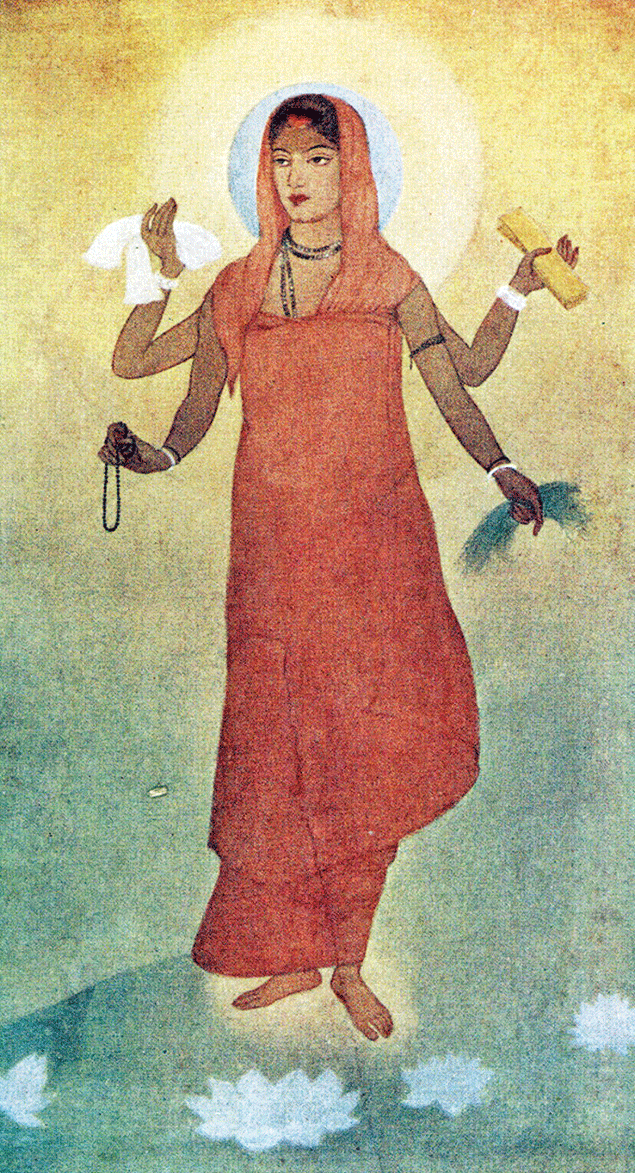
Banga Mata by Abanindranath
Abanindranath Tagore, regarded as the Father or Modern Art in India, painted the Banga Mata in 1905 in water color. The woman like a sadhvi is clad in saffron robes , has four hands holding sheaves of rice, a white cloth, a book and jaapmala. She also has a halo around her head and lotuses at her feet.
The light tinge of yellow used in the halo and near her feet, draw the attention of the viewers to her head and feet and then look at the painting. Abanindranath’s Bharat Mata was firstly known as Banga Mata symbolizing the mother of the land of Bengal. However, as the freedom struggle started gearing up, the painting was adopted for the humanization of the Bharat Mata or Mother India.
The expression on the depicted woman is very determined and looks at the left. The body posture too is strong and indomitable. The painting is a mix of spirituality and firmness at the same time. It is rather ironic, that with India’s patriarch oriented society, Bharat Mata is actually a woman and not a man. All the three representations, two paintings and the print depict a lady as the humanized form of the nation of India. Though each representation has its own meaning and interpretation.
In conclusion , M.F. Hussain’s oil painting seems to have a take on the human being and how boundaries, politics, power, religion take control of a person. In opposition to this D. Banerjee’s print shows Bharat Mata, as a saffronised Hindu Goddess, with the politicians and prominent freedom fighters at the top. While Abanindranath Tagore’s watercolor, meant to be a Banga Mata, adapted to be the Bharat Mata, in itself shows the insensitivity at that time, towards the multi-faced population of India.
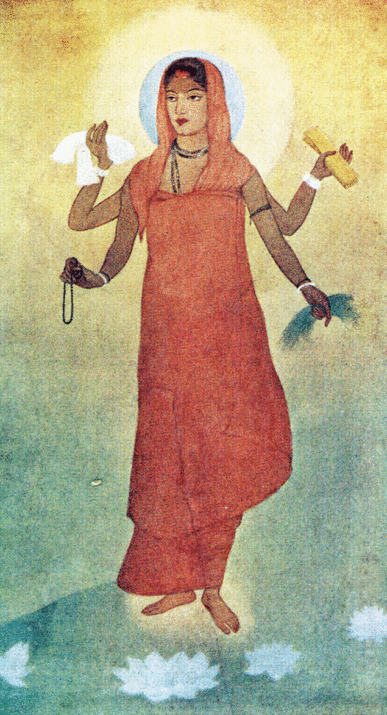
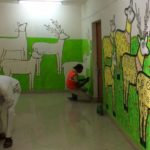
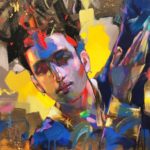
What do you think?